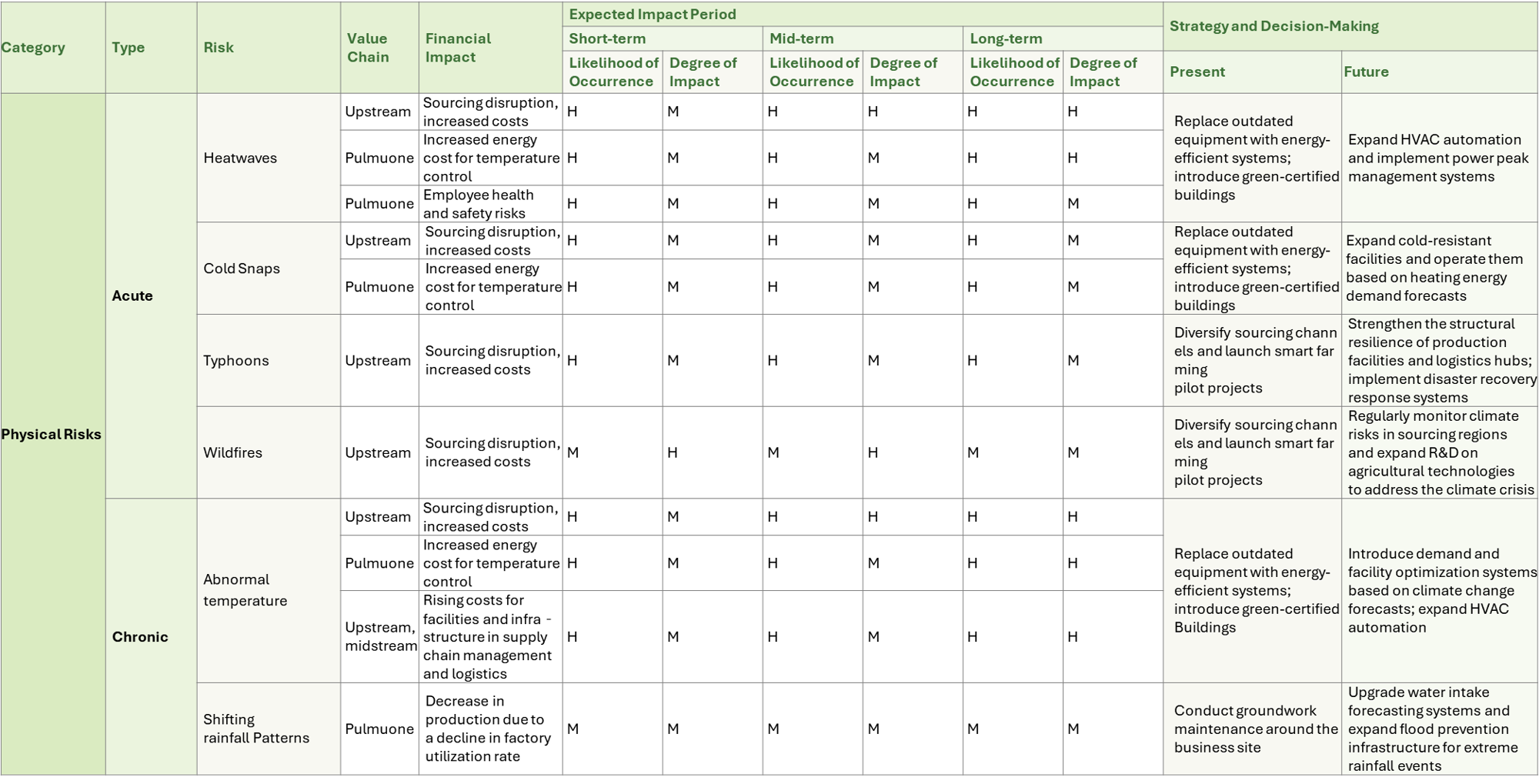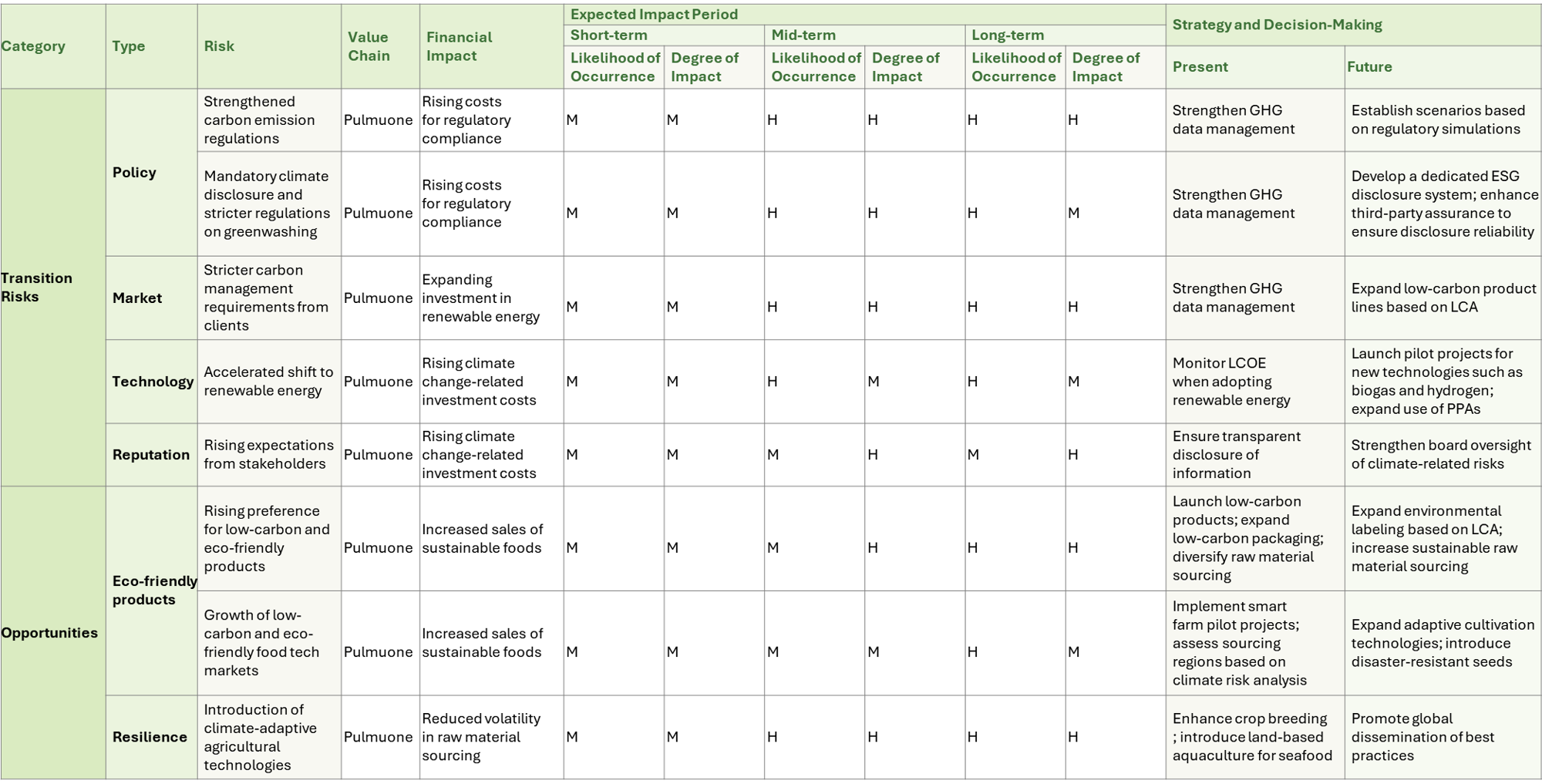Climate Risk Management & Physical Climate Risk Adaption
Pulmuone's Climate Change Risks and Response Strategies
Pulmuone is transitioning its key business areas to sustainable food and sustainable diet, and is working to diversify its product portfolio and enhance market recognition to capture opportunities arising from increasing customer preference for eco-friendly products and market expansion. To address risks related to raw material supply instability, the company is diversifying sourcing channels, developing climate-adaptive agricultural technologies such as smart farming and land-based seaweed cultivation, and expanding the use of sustainability-certified raw materials. To respond to rising energy costs and climate-related regulatory changes, Pulmuone established a Net Zero Strategy in 2023 and obtained approval from the Board of Directors and the ESG Committee for its targets, reduction portfolio, and reduction pathways.
Climate Materiality Assessment Results
Pulmuone's biodiversity dependency and impact measurement results showed that greenhouse gas emissions ranked as the second-highest impact factor. Accordingly, a climate risk assessment was conducted to identify response measures for reducing greenhouse gas emissions and mitigating climate risks. The assessment covered not only Pulmuone’s own business sites but also upstream and downstream activities, including customer use of company products. Priorities were derived by evaluating the probability and impact levels across short-, medium-, and long-term time horizons.
Pulmuone’s climate change response follows a phased process designed by management. First, management reviews climate-related risks and opportunities identified in the previous year to set strategic priorities. Based on these, targets and key performance indicators (KPIs) are established, and departmental implementation plans are developed. Resources and responsibilities for each task are clearly allocated to strengthen execution capabilities. During the implementation phase, regular monitoring and performance reviews are conducted, with management providing supplementary guidance as needed, reflecting target achievement status, risk changes, and internal and external evaluation results.
These procedures are integrated into key management cycles, including medium-term and annual planning, ESG Committee reporting, Session D meetings, and Integrated Report disclosures. Together, they provide the foundation for ensuring both strategic responsiveness and execution capabilities in addressing climate risks.











